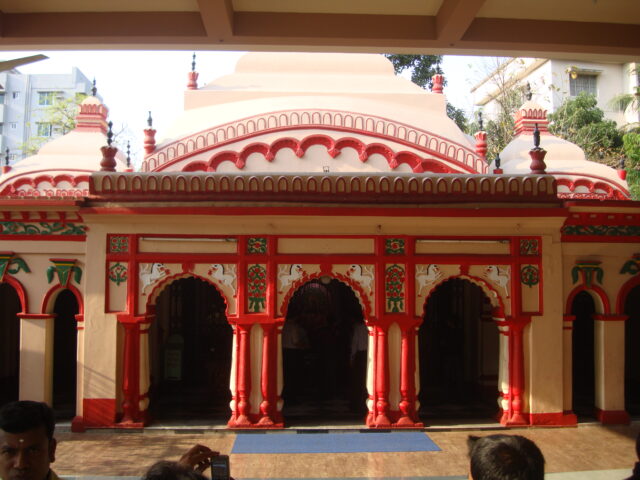By Kamal Sikder
The partition of India and Pakistan in 1947 was a pivotal event that left an indelible mark on the political and social landscape of South Asia. This division led to a mass migration of Hindus and Muslims, which significantly altered the demographic structure of both newly formed nations. This was not just a geographical reshaping but a profound transformation affecting millions of lives and their cultural identities.
On August 15, 1947, India and Pakistan emerged as two separate countries. The partition aimed to divide the subcontinent’s Hindu-majority areas into India and the Muslim-majority areas into Pakistan. At that time, there was also a proposal to form another separate nation including Bengal and Assam. Although this proposal was supported by Chittaranjan Bose and Sarat Bose, it was ultimately rejected due to Nehru’s opposition, despite gaining some support from the Muslim League in Bengal. This monumental shift sent shockwaves across the subcontinent, intensifying communal tensions and violence between Hindu and Muslim communities. Consequently, millions of Muslims from various parts of India migrated to Pakistan (then East and West Pakistan), while Hindus from Pakistan (especially from East Pakistan, now Bangladesh) were compelled to move to India.
In the partition’s aftermath, there was a significant exchange of populations, leading to violence and riots in adjacent regions. The arrival of Muslim migrants in Pakistan and the exodus of Hindus from East Pakistan to India fueled widespread social unrest and violence. The migration led to a demographic transformation in both countries, with India becoming a predominantly Hindu state and Pakistan a predominantly Muslim state.
Since the partition, political stability in India, Pakistan, and Bangladesh has never been fully achieved, giving rise to various social and political movements that continue to impact the political landscapes of all three nations. The massive migration of Hindus and Muslims after the partition in 1947 left an indelible mark on the history of India and Pakistan. This was not merely a change of territory but a profound shift affecting the lives of millions. In the context of Bangladesh, this migration has often sparked intense debates over the years.
The Current State of the Hindu Population in Bangladesh
According to an article published in 2011 in the Bangladeshi newspaper Daily Prothom Alo, the overall population of Bangladesh has more than doubled over the past 50 years, but the Hindu population has decreased by about 7.5 million. Although the Hindu population has recently increased slightly, the percentage has decreased compared to 2011. The first census of 1974 recorded that Hindus made up 13.5% of the total population of Bangladesh, which decreased to 7.5% in the 2022 census. In contrast, the proportion of Buddhists, Christians, and followers of other religions has remained relatively stable over this period.
Several significant factors contribute to the decline of the Hindu population in Bangladesh. One primary reason is the tendency of many Hindus to migrate to India, where they find a familiar cultural environment, given India’s Hindu-majority status. Additionally, many Hindus have relatives in West Bengal and Assam, creating a natural pathway for migration through marriage and family ties. Consequently, a significant number of Hindus migrate to India for social and familial reasons.
Another contributing factor to the decline of the Hindu population is the lower birth rate among Hindus compared to Muslims. According to the 2011 Population and Housing Census report by the Bangladesh Bureau of Statistics (BBS), the decline in the Hindu population is attributed mainly to two factors: emigration and a relatively lower total fertility rate among Hindus. This means that Hindu couples tend to have fewer children than their Muslim counterparts.
Furthermore, historical instances of population displacement or migration have played a significant role in this decline. After the partition of India in 1947, there was a substantial population exchange. Many Bengali Hindus moved from East Pakistan (now Bangladesh) to West Bengal and Assam, while Muslims migrated in the opposite direction. This was a period when India and Pakistan emerged as two independent countries and religious grounds were the basis for migration in both directions.
During the Bangladesh Liberation War of 1971, around 10 million people took refuge in India, a significant number of whom were from the Hindu community. Not all refugees returned to their homeland after the war; many who did later migrated to India again. Similarly, during the India-Pakistan war of 1965, there were migrations of Muslims to East Pakistan (now Bangladesh) and Hindus to India.
Although no specific fertility rate statistics by religious community are available from BBS or other government institutions, researchers from three institutions, including the International Centre for Diarrhoeal Disease Research, Bangladesh (ICDDR,B), have analyzed demographics in a small area (Chandpur District) of the country. They found that, along with migration and lower fertility rates, the neonatal mortality rate is also slightly higher among the Hindu population.
Political leaders, sociologists, Hindu community leaders, and researchers agree that migration is the primary reason for the declining Hindu population. There are also historical reasons behind this. Professor Abul Barkat from the Department of Economics at Dhaka University, who has been researching the emigration of minorities for over three decades, notes that economic, social, and political factors also play a significant role. He states that many Hindus are compelled to leave the country due to persecution, and laws like the Enemy Property Act have forced many to abandon their properties and flee, a significant problem, particularly for rural, vulnerable Hindus.
In recent years (2011-2024), similar issues persist. For instance, during the recent Durga Puja, incidents of vandalism of temples and puja pavilions, arson of Hindu homes and businesses, and looting were reported in various parts of the country, often under the pretext of blasphemy allegations. In many instances, political changes have also led to attacks on Hindus. Generally, the Hindu community in Bangladesh supports the Awami League, so whenever political shifts occur, Hindus become targets of violence.
The Enemy Property Act as a Major Factor in the Decline of the Hindu Population in Bangladesh
Many ordinary Hindus believe that one of the primary reasons for their emigration is the Enemy Property Act. The Pakistani government enacted this law in 1965 during the India-Pakistan war, which remains in effect today, resulting in the displacement of thousands of Hindu families from their lands and homes.
After Bangladesh gained independence, the Enemy Property Act, later renamed the Vested Property Act, was used as a tool to confiscate the property of minority communities. This law and its implementation have been the subject of much controversy. Even after independence, Sheikh Mujibur Rahman’s government did not repeal this law, allowing members of the ruling party, particularly the Awami League, to exploit the law to seize properties from minorities.
What is Enemy Property?
Enemy Property refers to properties owned by individuals who, after the independence of India, migrated to Pakistan or China and took citizenship in those countries. Following the 1965 India-Pakistan war, the Indian government enacted the Enemy Property Act of 1968, under which such properties were taken under government custody. According to this law, these properties were considered ‘enemy property,’ and private ownership was annulled, even if they lived in India or their heirs were Indian citizens.
History of Enemy Property:
India:
The concept of Enemy Property in India originated during the partition of India and Pakistan in 1947 and the subsequent India-Pakistan war of 1965. During the partition, many Muslim families moved to Pakistan, and their abandoned properties were deemed enemy properties. Later, following the 1965 India-Pakistan war, the Enemy Property Act was enacted to establish government control over these properties.
Bangladesh:
In Bangladesh, the history of enemy property dates back to the Pakistani era. During the 1965 India-Pakistan war, many Hindu families migrated to India, and their abandoned properties were declared enemy properties by the Pakistani government. After Bangladesh gained independence in 1971, these properties were re-designated as ‘vested properties.’
The Vested Property Act During Sheikh Mujibur Rahman’s Rule:
After independence, the government led by Sheikh Mujibur Rahman did not repeal the Enemy Property Act, which became a contentious issue. During the Awami League’s rule, particularly by its leaders and activists, this law was used to seize properties from minority communities.
Impact and Reality:
During Sheikh Mujibur Rahman’s rule, not only were properties abandoned by Pakistanis seized, but many Hindu families’ properties were also confiscated. During this period, many members of the Hindu community were forced to sell their lands at low prices. This process was accelerated by the then-political activists, creating a sense of fear and insecurity among the minority community.
As a result, even after independence, adequate legal protection to safeguard the properties of minority communities could not be ensured. Instead, the Enemy Property Act and the amended Vested Property Act became tools to undermine the rights of minorities.
Existing Laws:
India:
- Enemy Property Act of 1968: Enacted to establish government control over properties left behind by individuals who migrated to Pakistan. Under this law, enemy properties legally fall under the state’s authority and remain under government control.
- 2016 Amendment: This amendment further tightened laws regarding the inheritance of enemy properties. Under this law, enemy properties cannot be returned to heirs. The law prohibits civil courts from adjudicating cases involving these properties.
Bangladesh:
- Enemy Property (Acquisition) Act of 1965: Under this law, the Pakistani government acquired enemy properties, establishing full government control over these properties.
- Vested Property Act of 1974: After Bangladesh’s independence, enemy properties were renamed ‘vested properties,’ and the government brought these properties under state control.
3
. Vested Property Return Act of 2001: This law was enacted to allow previous owners or their heirs to reclaim vested properties. However, this process is complex, time-consuming, and often mired in legal complications.
Relevant Information:
- Extent of Enemy Property: The amount of enemy property is substantial in both countries. In India, millions of acres of land and thousands of houses are designated as enemy properties. Similarly, a significant number of properties in Bangladesh remain as vested properties.
- Legal Controversy: Numerous lawsuits have been filed regarding enemy properties in both countries, often leading to prolonged legal battles over property ownership, many of which are still ongoing.
Rehabilitation Process:
India:
The Indian government has auctioned these properties at various times, with proceeds going to the state treasury. A special commission was also formed to rehabilitate enemy properties, developing various policies and guidelines.
Bangladesh:
In Bangladesh, the Vested Property Return Act of 2001 was enacted to facilitate the rehabilitation of vested properties. This allows previous owners or their heirs to recover the properties. However, this process is slow, often entangled in legal complexities.
Current Context:
Controversy and legal complications persist over enemy property in both India and Bangladesh. The 2016 amendment to India’s Enemy Property Act sparked new debates, with many opposing it. In Bangladesh, the process of returning vested properties is slow, with many properties still awaiting rehabilitation.
India:
- Property Auction: The Indian government is auctioning enemy properties, a process that is ongoing.
- Legal Challenges: Legal challenges persist over the Enemy Property Act, with many cases still pending.
Bangladesh:
- Return Process: The process of returning vested properties in Bangladesh is slow, with many properties still awaiting rehabilitation.
- Legal Battles: Numerous legal battles over vested properties continue, and efforts to resolve these issues are ongoing.
The Enemy Property Act and the amended Vested Property Act are complex and controversial issues in Bangladesh’s history. After independence, sufficient legal protection for safeguarding the properties of minority communities could not be ensured. Instead, these laws became tools for undermining the rights of minorities. The government must take effective steps to resolve these issues and ensure the rights of minority communities. With joint efforts from the government and relevant parties, this problem can be resolved, ensuring the rights of affected individuals through the rehabilitation of enemy properties.
The Decline in the Hindu Population is Not a New Trend
The decline in the Hindu population is not a new trend; it is a historical pattern. In the 1901 census, Hindus made up 33% of the population in Bangladesh, a percentage that has continuously declined in subsequent censuses. The partition of 1947, the India-Pakistan war of 1965, and the Liberation War of 1971 are three significant events that have played a crucial role in the decrease of the Hindu population.
In 1977, the Fifth Amendment removed the word “secularism” from the constitution, and in 1988, Islam was declared the state religion. Although these changes occurred under military rule, subsequent democratic governments have not taken steps to revert these state ideals to their previous status. This has also caused a sense of unease among minorities, particularly Hindus.
Three Bangladeshi researchers—Md. Moinuddin Haider, Mizanur Rahman, and Nahid Kamal—mentioned in a 2019 study that between 1989 and 2016, the population growth rate of Hindus was lower than that of Muslims, primarily due to migration, lower fertility rates, and comparatively higher mortality rates.
Explaining this trend, Professor Mohammad Mainul Islam from the Department of Population Sciences at Dhaka University mentioned that population growth or decline occurs through three primary demographic processes: birth rate, death rate, and migration. All three factors have contributed to the decline of the Hindu population. In recent years, the rate of decline in the Hindu population has accelerated, emerging as a significant social and political issue in Bangladesh.
The decline in the Hindu population in Bangladesh, especially among the minority communities, is evident from census data. While there may be some debate over the extent of the decline, the real question here is why their numbers have decreased. The first census in independent Bangladesh was conducted in 1974, when Hindus made up 13.5% of the total population. This percentage decreased to 12.1% in 1981, 10.5% in 1991, 9.3% in 2001, and 8.5% in the most recent census of 2011. These figures clearly indicate that the Hindu population in Bangladesh has been steadily declining since independence. In contrast, the Muslim population has increased during this period. While Muslims made up 85.4% of the total population in 1974, they accounted for 91.5% in 2022.
According to BBS data, Bangladesh’s total population was 71.48 million in 1974, of which the Muslim population was 61.39 million, and the Hindu population was 9.67 million. By 2011, Bangladesh’s total population had risen to 144.04 million, with the Hindu population standing at 12.3 million. Although the Muslim population increased proportionally during this period, the Hindu population decreased by about five percentage points.
The latest census was conducted in 2011, and a new census is scheduled every 10 years. Therefore, the sixth census was due in 2021. However, besides the census, BBS, under the Ministry of Planning, annually publishes the Bangladesh Sample Vital Statistics report. According to the 2022 census, the Muslim population in Bangladesh is 91.04% of the total population, while Hindus and followers of other religions together constitute 8.96%. Although the Hindu percentage is not specified separately here, it can be inferred that the number of Hindus and other religions has increased slightly compared to 2011.
The BBS report of 2015 showed that Hindus made up 10.7% of the total population, compared to 9.9% the previous year. According to census data, from 1911 to 2011, the ratio of Muslim and Hindu populations has continuously changed. In 1911, Muslims comprised 67.2% of the total population, while Hindus accounted for 31%. Subsequently, in each decade, the proportion of the Muslim population has increased, and the proportion of the Hindu population has decreased.
Professor Abul Barkat from the Department of Economics at Dhaka University, who has researched the issue, noted that an estimated 11.3 million Hindus went missing from Bangladesh between 1964 and 2013. His observations suggest that in the 1941 census, the Hindu population was 29.7%, which should currently be around 29.7%. If the current Hindu population is approximately 14-15 million, it should now be close to 50 million. This shortfall of around 37 million is what Priya Saha mentioned. However, he states that this simple calculation is incorrect because the population changes due to partition in 1947 and subsequent political migration.
| Decade | 1951 | 1961 | 1974 | 1981 | 1991 | 2001 | 2011 | 2022 |
| Community | ||||||||
| Muslim | 76.9 | 80.4 | 85.4 | 86.7 | 88.3 | 89.7 | 90.4 | 91.04 |
| Hindu | 22% | 18.5% | 13.5% | 12.1% | 10.5% | 9.2% | 8.5% | 7.95% |
| Buddhist | 0.7% | 0.7% | 0.6% | 0.6% | 0.6% | 0.7% | 0.6% | 0.61% |
| Christian | 0.3% | 0.3% | 0.3% | 0.3% | 0.3% | 0.3% | 0.3% | 0.3% |
| Other | 0.1% | 0.1% | 0.2% | 0.3% | 0.3% | 0.2% | 0.1% | 0.12% |
Professor Barkat further notes that Hindu migrants generally went to India because, being economically weak, they could not migrate to countries like Germany or America. He identifies six primary reasons for the emigration of Hindus:
- High fertility rates among Muslims in the region,
- The 1964 riots,
- The 1965 India-Pakistan war,
- The Enemy Property Act,
- The Vested Property Act, and
- Insecurity.
Kajal Debnath, a presidium member of the Hindu Buddhist Christian Unity Council, also states that including Islam as the state religion in the constitution is another reason for the Hindu exodus. According to him, the primary aim of attacks on Hindus is to seize their land and businesses, usually orchestrated by influential individuals, although ordinary Muslims can also be involved in such acts.
It is worth noting that the Hindu population is highest in the Sylhet division and lowest in Rajshahi, while among Muslims, the population is highest in Mymensingh and lowest in Sylhet.
All these facts and analyses suggest that multiple factors contribute to the decline of the Hindu population in Bangladesh, including political, social, religious, and demographic changes.
Kamal Sikdar is a data scientist, journalist, and TV presenter.
Reference:
- “The Great Partition: The Making of India and Pakistan” by Yasmin Khan
- “Empowering the Poor? Civic Inclusions and Exclusions in Bangladesh” by Naomi Hossain
- Barkat, A., et al. (2008). “An Inquiry into Causes and Consequences of Deprivation of Hindu Minorities in Bangladesh through the Vested Property Act.”
- Rahman, A. (2019). “The Decline of Hindu Population in Bangladesh: Causes and Implications.” Asian Journal of Social Science Studies.
- Chowdhury, A. A. (2017). “Religious Minorities in Bangladesh: A Question of Survival.” South Asia Journal.
- Bangladesh Bureau of Statistics (BBS), “Population and Housing Census” Reports (1974, 1981, 1991, 2001, 2011, 2022).
- Bangladesh Bureau of Statistics (BBS), “Sample Vital Statistics” Reports (Annual Reports).
- Prothom Alo, “Hindu Population Decline in Bangladesh: Causes and Trends,” (2011).
- The Daily Star, “Demographic Shifts and Minority Rights in Bangladesh,” (2020).
- International Centre for Diarrhoeal Disease Research, Bangladesh (ICDDR,B), “Demographic Study in Chandpur District,” (2015).









